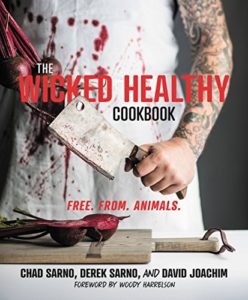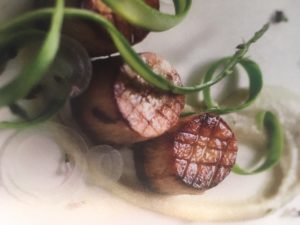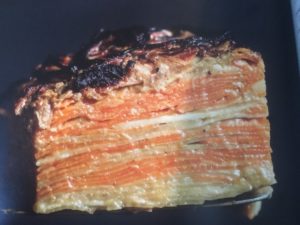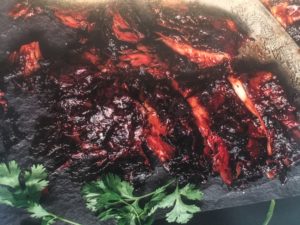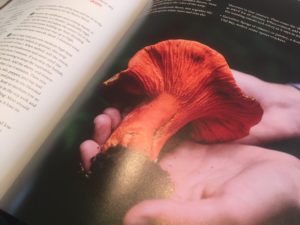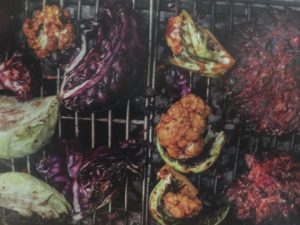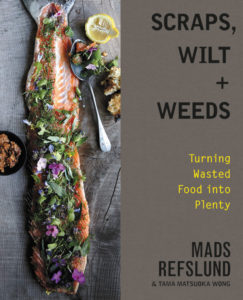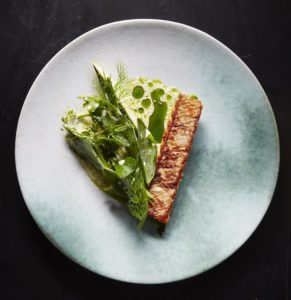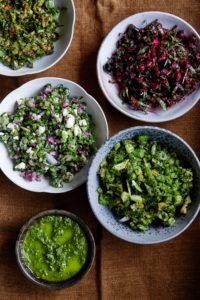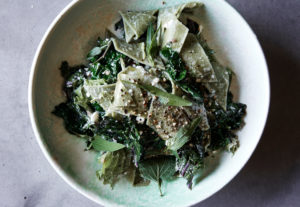Category Archives: Food Waste
The Wicked Healthy Cookbook – Free. From. Animals. (Preliminary Review)
By Chad Sarno, Derek Sarno, and David Joachim
Grand Central Life & Style, Hachette Book Group, New York, NY 2018 $30
I love this book!!! From the minute it arrived, I was lost. Just skimming the essays, lists, Pro Tips and stunning recipes and images took me into the wee hours. Putting it down was not an option. Granted, my guilty pleasure is reading cookbooks. But this is a very special tome. Just when it felt like plant-based cuisine had reached its limits, with book after book adding a few new spins but churning the same ground, Wicked Healthy has seriously upped the ante. It’s fun, exciting, innovative, energetic, – the enthusiasm for the possibilities of plant-based gastronomy leaps off the pages. Dust off that mandoline!
To be clear this is not a book for every veg-forward cook. It is not an intro to the philosophy or a beginners’ guide. Some of the recipes are challenging, time-consuming and utilize esoteric ingredients that may require the resources of Whole Foods, Amazon, H-Mart, Thrive, a sophisticated farmers market and a few small mail-order houses – and even then you may have to be satisfied with recommended subs. It’s also, not surprisingly, a bit cheffy – many ingredients lists include other recipes so, unless you have a staff, there is sometimes serious time required. But it will be well-spent, satisfying time – even the process of discovering new or less-available ingredients will be well-spent, satisfying time. Bottom line, if all you do is just read The Wicked Healthy Cookbook, you can’t help but appreciate the expanded possibilities of plant-based cookery.
This is just my first review. I am going to cook my way through a good chunk of the book and post the results as I go. Starting with their bold new take on mushrooms: King Oysters, Maitakes, and Lobsters. What fun!! I can’t wait.
(One question – olive oil instead of avocado oil for high heat cooking?)
Glorious Food Waste
For decades, I have been gently chided, and occasionally mocked, for my kitchen frugality. A drawer filled with wilting produce sets off a visceral reaction leading to aggressive cooking. I don’t think it’s cheapness, as much as it’s a deep-seated concern about waste. Over the years, cooking teachers have denigrated the big, re-purposed Ziplock in my freezer chock full of plant scraps and leavings; apparently only pristine produce is good enough to make vegetable stock or fruit sauces. But still I persisted because, frankly, that just didn’t make any sense to me. And, besides, I just can’t empty that seemingly still good food into the trash or compost heap.
A short while ago, I stumbled on a wonderful “cookbook” Scraps, Wilt + Weeds written by Mads Refslund and Tama Matsuoka Wong. Refslund was a co-founder of world-famous Danish restaurant, Noma, and, shockingly, shares my visceral reaction to wilting, near-rotting produce! But he goes many steps beyond just making vegetable stock, dry-roasting just-past-prime produce, stewing less than perfect fruit into sauces and, of course, freezing very ripe bananas for breads and smoothies. Mads Refslund has elevated waste to haute cuisine.
The concepts are invigorating and inspirational – with stunning photographs that make near garbage extraordinarily beautiful. I use the word concept advisedly – to me the recipes are more conceptual than standard “multi-user-tested” ones. This is relatively new turf and the reader needs more guidance as to when, for instance, a tomato is near rot or just plain rotten. Even though I am a fairly accomplished home cook and long-time rescuer of wilted produce, I often had questions. For instance, a couple years ago I made carrot-top pesto from gorgeous, young CSA carrots and it was so bitter, it was inedible – why wasn’t his?
On the other hand, he encourages flexibility – use what you have (less, more or sub something else) rather than create more waste by buying to meet the specific recipe requirements. Other chapters focus on buying “ugly” produce, foraging for “weeds” and even using discarded fish parts. All told, it is a glorious paean to the minimization of waste and as I reluctantly released my non-renewable library copy, I concurrently added it to my Amazon list.
Mads Refslund has vindicated my kitchen frugality while he introduced others on whose shoulders he stands; those who have been long proselytizing waste reduction but who did not have his bully pulpit**. He has made reducing food waste sexy and chic. What a stunning, unbelievable accomplishment!! This is a book to own – a reference to stiffen our spines and alter our perceptions when we are about to sweep the leavings into the Waste King or the compost pot.
Why is this book so important? Every year, roughly 30% of all the food raised on the planet for human ingestion is literally wasted. If you just look at first world countries that number is even higher with the U.S. leading the pack at over 40%. According to the World Economic Forum, our global population is projected to reach 9.6 billion by 2050 – raising the leading question: how do we feed everybody? The United Nation’s FAO (Food & Agriculture Organization) posits that we already grow enough food, we just have to figure out how to save that 30-40% that we are currently wasting – which represents about 28% of the earth’s agricultural land. A whopping 25 percent of that waste is imperfect produce left in the fields to rot and 15% comes from tossed out, perfectly edible, food. (An additional, crucial, benefit would be to save the carbon footprint of all that wasted food –according to the EPA, landfills account for 34% of all U.S. methane emissions.)
** I am reading some of the author’s references and will share reviews and content in future posts.
